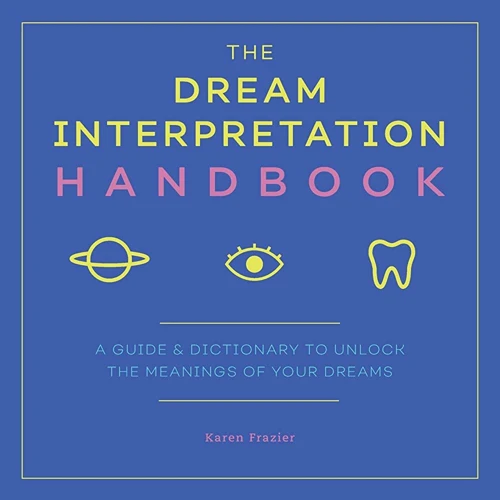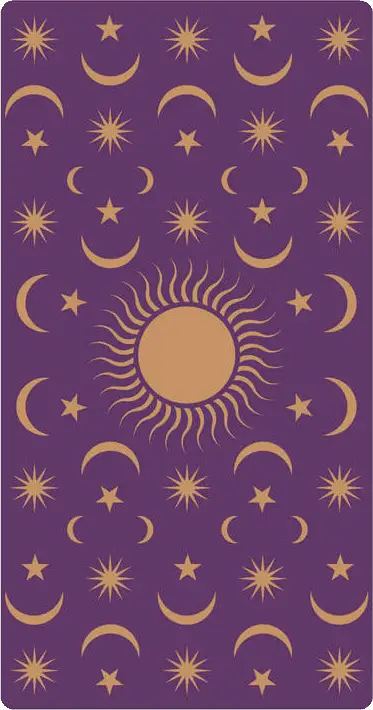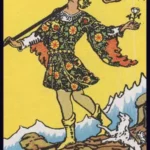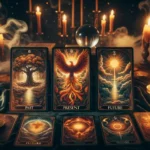Colors have always been a source of fascination for humans. They affect our moods and emotions, and they can also appear in our dreams. While some may dismiss dream colors as mere figments of the imagination, they actually hold great significance in dream interpretation. Understanding the meaning behind dream colors can offer valuable insight into our subconscious thoughts and feelings. From the fiery reds to the calming blues, every color has a story to tell. In this article, we will explore the significance of colors in dream interpretation and how they can be used to unlock the secrets of our dreams.
Understanding Dream Colors
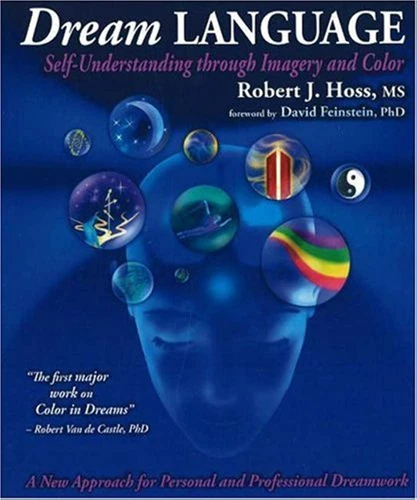
Dreams can be mysterious and complex, leaving us with more questions than answers. One aspect of dreams that adds to their enigmatic nature is the appearance of colors. Many people have reported seeing vivid and vibrant colors in their dreams, but what is the significance of these colors in dream interpretation? Understanding the nuances behind dream colors can provide insight into the subconscious mind and uncover hidden emotions and desires. In this section, we will explore the reasons why colors appear in dreams, the psychological meanings behind them, and their cultural significance.
Why Colors Appear in Dreams
Colors are an integral part of our daily lives and surroundings, and so it is not surprising that they also show up in our dreams. Dreams are a reflection of our subconscious minds, and colors can add depth and complexity to these subconscious messages. Here are some reasons why colors appear in dreams:
| Reasons | Explanation |
|---|---|
| Visual Input | One possible reason why we dream about colors is simply because we have seen them in our waking lives. The brain’s processing of visual input can manifest in our dreams in the form of colors. |
| Emotional Associations | Colors are often associated with certain emotions, such as red with anger or green with envy. When we experience strong emotions throughout the day, these emotions may carry over into our dreams and be expressed through colors. |
| Symbolic Meaning | Colors have symbolism and cultural meanings that have been passed down through generations. These meanings can be ingrained in our subconscious minds and show up in our dreams as symbolic representations. |
| Psychological States | Our psychological states can impact the colors we see in our dreams. For example, if we are feeling anxious or overwhelmed, we may dream in darker or gloomier colors; on the other hand, if we are feeling joyous and carefree, we may dream in brighter or more vibrant colors. |
It is important to keep in mind that there may be a combination of these reasons at play when colors appear in our dreams. Paying attention to the specific colors and the context in which they appear can help us interpret the meaning and messages behind them.
The Psychological Meanings of Colors
Colors in dreams can carry a deep psychological significance that can help interpret what is going on in the subconscious mind of the dreamer. Below are some of the common psychological meanings associated with certain dream colors.
Red:
Red is a color that evokes strong emotions, such as passion, anger, and danger. In dreams, red can indicate intense feelings, like love or aggression. It can also symbolize warning signs or danger signals that may be present in the dream.
Orange:
Orange is often associated with warmth, creativity, and curiosity. In dreams, it can suggest a time of exploration and new beginnings. However, it can also indicate frustration or anxiety about not being able to complete a creative project.
Yellow:
Yellow is commonly associated with happiness, joy, and intellectual curiosity. In dreams, it can represent optimism or enlightenment. It can also suggest caution, as yellow is often associated with warning signs.
Green:
Green is often associated with nature, growth, and healing. In dreams, it can represent the desire for growth or a new beginning. It can also suggest jealousy or envy, as green is associated with the expression “green with envy”.
Blue:
Blue is commonly associated with calmness, peace, and tranquility. In dreams, it can symbolize harmony and balance. It can also suggest sadness or depression, as people often describe feeling “blue” when they are down.
Purple:
Purple is often associated with royalty, luxury, and creativity. In dreams, it can represent abundance and power. It can also indicate a desire for recognition, as purple is often associated with prestige.
White:
White is commonly associated with purity, innocence, and spirituality. In dreams, it can symbolize a desire for a fresh start or a clean slate. It can also indicate a lack of direction or purpose, as white can be seen as a blank canvas.
Black:
Black is often associated with darkness, fear, and mystery. In dreams, it can represent the unknown or the unconscious mind. It can also indicate power or authority, as black is often associated with formal attire and seriousness.
Understanding the psychological meanings associated with different dream colors can provide insights into the emotions and desires of the dreamer. It is important to consider the context of the dream and any personal associations with the colors to fully interpret their significance.
The Cultural Significance of Colors in Dreams
The Cultural Significance of Colors in Dreams
Colors also have cultural significance and what a color means in one culture may not mean the same thing in another. Here’s a look at the different cultural meanings of colors when they appear in dreams:
| Color | Western Culture | Eastern Culture |
|---|---|---|
| Black | death, mourning | wealth, knowledge, self-cultivation |
| White | purity, innocence | death, mourning |
| Red | love, passion, anger | happiness, prosperity, celebration |
| Green | envy, inexperience | health, prosperity, youth |
| Yellow | cowardice, caution | positivity, royalty, power |
| Blue | sadness, depression | trust, loyalty, heaven |
| Purple | royalty, luxury | spirituality, wisdom |
| Orange | energy, friendliness | spirituality, enlightenment |
In the Western culture, black is often associated with death and mourning, while white is associated with purity and innocence. On the other hand, in Eastern cultures, black represents wealth, knowledge, and self-cultivation, whereas white represents death and mourning.
Likewise, red symbolizes love, passion, and anger in the Western culture, but it is associated with happiness, prosperity, and celebration in the Eastern culture. Green represents envy and inexperience in the West, but it signifies health, prosperity, and youth in the East.
Similarly, yellow is associated with cowardice and caution in the West, while in the East, it represents positivity, royalty, and power. Blue is often associated with sadness and depression in Western culture, while in the East, it signifies trust, loyalty, and heaven.
Purple represents royalty and luxury in the Western culture, while in the Eastern culture, it signifies spirituality and wisdom. Finally, orange represents energy and friendliness in the West, but it symbolizes spirituality and enlightenment in the East.
It’s essential to consider the cultural significance of colors when interpreting dreams. Cultural differences can change the interpretation of the dream.
How to Interpret Dream Colors
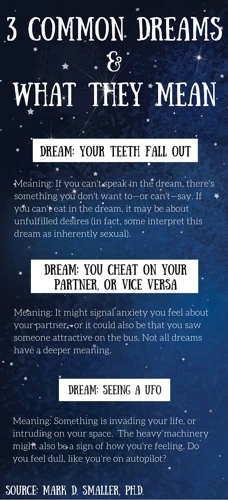
Understanding the significance of dream colors is only the first step. The real challenge lies in interpreting them. Every dream is unique and the meanings of dream colors may differ from person to person. However, there are certain key factors to consider in order to deduce the most accurate interpretation of the colors in your dream. So, let’s dive into the step-by-step process of interpreting dream colors through a variety of techniques that will help you unlock the message hidden within your dreams.
Consider the Context of the Dream
When interpreting dream colors, it is important to consider the context in which they appear. Context refers to the overall setting, events, and emotions that occur within the dream. This can greatly impact the meaning of the colors present. For example, the color red may have a different meaning in a dream about a romantic evening compared to a dream about being chased by a dangerous animal.
To fully understand the context of a dream, it can be helpful to create a table or chart to track the key elements. This could include the location, characters, actions, emotions, and any other relevant details that might impact the meaning of the colors. Here is an example:
| Element | Description |
|---|---|
| Location | Dark forest |
| Characters | Unknown figures chasing me |
| Actions | Running and hiding |
| Emotions | Fear and anxiety |
In this example, if the dreamer were to see the color red, it could signify danger or the need for caution, given the context of the dream. However, if the dreamer were to see the color red in a different dream that takes place in a romantic setting, the color red could represent passion or desire.
It is essential to consider the context of the dream when interpreting the meaning of colors. By tracking the various elements of the dream and analyzing them in relation to each other, you can gain a deeper understanding of the message being conveyed through the colors present.
Focus on the Dominant Color
When analyzing the colors in a dream, it is important to identify the dominant color. This is the color that appears the most prominently in the dream and can offer key insights into the dreamer’s state of mind and emotions.
To identify the dominant color, start by mentally reviewing the dream and noting which color(s) stood out the most. Then, create a list of all the colors that appeared, and determine which color appeared the most frequently.
Once you have identified the dominant color in your dream, consider the following:
- What do you associate with this color?
- How does this color make you feel in your waking life?
- What emotions does this color evoke in you?
These questions can help guide your interpretation of the dream and provide insight into the significance of the dominant color. For example, if the dominant color was red and you associate this color with passion and intensity, it could suggest that the dream is related to strong emotions or desires.
It is also important to consider how the dominant color interacts with other colors in the dream. Does it contrast or complement other colors? This can provide further context and insight into the dream’s meaning.
Remember, every individual has their own unique associations with colors, so it is important to focus on the feelings and emotions that the dominant color evokes in you specifically.
Explore Personal Associations
When it comes to dream interpretation, exploring personal associations with colors is a crucial step in unlocking the meaning behind your dreams. This is because the meanings of colors can vary greatly based on an individual’s personal experiences and associations. There are several ways to explore your personal associations:
- Reflect on past experiences: Think about times in your life when you have seen or experienced the color in question. Consider the emotions and memories associated with those experiences.
- Consider your current emotions: Think about your mood and emotions in the dream. Does the color reflect those emotions or contradict them?
- Examine your cultural background: Different cultures have different associations with colors, so consider how your cultural background might influence your personal associations.
- Think about your personal preferences: Do you have a favorite color? Do you love or hate certain colors? These personal preferences can shed light on how you interpret colors in your dreams.
Exploring personal associations can be a powerful tool in dream interpretation, as it allows you to uncover meanings that are uniquely tailored to your own personal experiences and psyche.
Utilize Color Symbolism Resources
One useful way to interpret dream colors is to utilize color symbolism resources. Various cultures and belief systems attribute specific meanings to colors, which can help give insight into the messages conveyed in dreams. Here are some examples of common color meanings:
| Color | Symbolism |
|---|---|
| Red | Passion, love, anger, danger |
| Orange | Energy, warmth, creativity, ambition |
| Yellow | Happiness, optimism, intellect, caution |
| Green | Nature, growth, healing, envy |
| Blue | Calmness, serenity, trust, sadness |
| Purple | Royalty, luxury, spirituality, mystery |
| White | Purity, innocence, cleanliness, emptiness |
| Black | Fear, mystery, power, death |
Keep in mind that these meanings can also vary depending on personal associations and cultural context. Utilizing color symbolism resources can provide a starting point for interpreting dream colors, but it’s important to also consider the other factors involved in the dream’s context and the individual’s own experiences and emotions.
The Meanings Behind Dream Colors
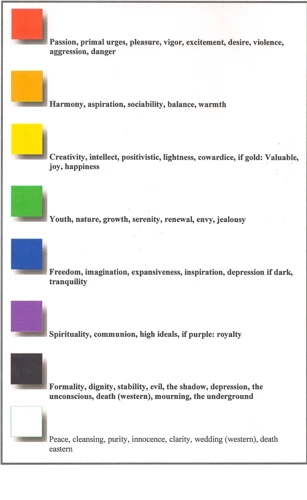
One of the most fascinating aspects of dream interpretation is deciphering the meanings behind the colors that appear in them. Colors can signify emotions, themes, and even predict future events. As we delve into the significance of dream colors, prepare to be mesmerized by the complexities and depths of the human psyche. Each color has its own unique interpretation, and understanding these meanings can provide insight into the hidden message your subconscious mind is conveying. From fiery red dreams to tranquil blue ones, each hue holds a secret message waiting to be decoded. So, let’s explore the vast array of colors that can appear in our dreams and what they might represent.
Red Dreams
Dreams that feature the color red can have a variety of meanings, depending on the context of the dream and the individual’s personal associations with the color. Here are a few possible interpretations of red dreams:
- Passion: Red is often associated with intense emotions, particularly passion and desire. If you dream of red, it may be an indication that your emotions are running high or that you feel a strong attraction to someone or something in your waking life.
- Anger: On the other hand, red can also be a signal of intense anger or frustration. If you dream of red, it may be a warning that you are feeling out of control or that your temper is in danger of getting the better of you.
- Danger: Red is also often tied to the idea of danger or warning. In some cases, dreaming of red may be an indication that you need to be careful or take precautions in order to avoid a potentially hazardous situation.
- Power: Red is a bold and assertive color, and it is often associated with power and confidence. If you dream of red, it may be an indication that you are feeling particularly strong or self-assured in your waking life.
- Love: While red is often associated with romantic passion, it can also be a signal of deep love and affection. If you dream of red, it may be a sign that you are feeling particularly loving or connected to someone in your waking life.
Remember that the meaning of a dream is always highly personal and dependent on a number of factors. When interpreting the significance of red in your dreams, it is important to consider the context of the dream itself, your own personal associations with the color, and any other symbols or images that may have appeared alongside the color red.
Orange Dreams
When it comes to dream interpretation, the color orange can carry a variety of meanings. This warm and vibrant hue is often associated with enthusiasm, creativity, and success. However, the meaning of orange dreams can vary depending on the context of the dream and the individual’s personal associations with the color.
The Meanings Behind Orange Dreams
| Symbolism | Meaning |
|---|---|
| Enthusiasm | Orange represents energy, passion, and excitement. In dreams, it may symbolize a surge of enthusiasm for a new project or adventure. |
| Creativity | Orange is often seen as a color of creativity and innovation. In dreams, it may indicate that the dreamer needs to tap into their creative side or approach a situation with an open mind. |
| Success | Orange is commonly associated with success and achievement. In dreams, it may represent reaching a goal or enjoying the fruits of hard work. |
| Warning | On the negative side, orange may be a warning of danger or warning against rash decisions. The bright color can symbolize impulsiveness or recklessness. |
Interpreting Orange Dreams
When interpreting a dream with the color orange, it’s important to consider the context of the dream and the other details that may be relevant. For example, dreaming of an orange fruit may have different implications than dreaming of an orange car. Additionally, personal associations with the color may also play a role in the dream’s meaning. If orange is a favorite color or associated with a significant event or person, it may carry a more specific significance.
Utilizing resources on color symbolism can also be helpful in decoding the meaning of an orange dream. For example, different cultures may view orange in different ways, and understanding these cultural perspectives can add another layer of insight to the dream interpretation.
Orange dreams can be a sign of creativity, energy, and success, but may also indicate danger or impulsivity. By carefully considering the dream’s context and personal associations with the color, as well as consulting additional resources, it is possible to gain a deeper understanding of the dream’s message.
Yellow Dreams
Yellow is a sunny, cheerful color that typically symbolizes happiness, joy, and optimism. In dreams, yellow can take on a variety of different meanings depending on the context. Here are some possible interpretations of yellow dreams:
- Positivity: If you dream of a bright, sunny day with yellow flowers and yellow clothing, it may symbolize positivity and happiness in your waking life. This dream could be telling you to focus on the good things in your life and try to maintain a positive outlook.
- Creativity: Yellow is also associated with creativity and innovation, so a dream that features a lot of yellow could be encouraging you to tap into your creative side and explore new ideas.
- Cowardice: In some cultures, yellow is associated with cowardice or fear. If you dream that you or someone else is wearing a yellow shirt or dress and it makes you feel afraid or nervous, this could be a sign that you need to be more courageous in your waking life.
- Jealousy: Alternatively, yellow can also symbolize jealousy or envy. If you dream that someone is wearing a bright yellow outfit or driving a yellow car that you covet, this could indicate that you are feeling envious of someone else’s success or wants something that they have.
Yellow is a versatile color in dream interpretation, with many different possible meanings depending on the specific dream. If you have a yellow dream, try to think about the context of the dream and your own personal associations with the color to gain deeper insight into its significance.
Green Dreams
Green dreams may symbolize growth, renewal, balance, or healing. Green is often associated with nature and can represent a connection to the environment or a longing for a simpler, more natural lifestyle. However, the specific interpretation of a green dream depends on the context of the dream and the personal associations of the dreamer. Here are some possible meanings behind green dreams:
- Renewal: Green can represent a fresh start and new beginnings. A dream featuring lush greenery or new growth may indicate that the dreamer is ready for a positive change in their life.
- Growth: Green is the color of growth and fertility. Dreams featuring green plants or trees may symbolize personal or professional growth, particularly in creative or intellectual pursuits.
- Balance: Green is also associated with balance and harmony. A dream featuring green can indicate a need for balance in the dreamer’s life or a desire for more peace and tranquility.
- Healing: Green is often associated with healing, both physically and emotionally. A dream featuring green may indicate that the dreamer is in need of healing, either from an illness or a psychological issue.
- Nature: Green is most commonly associated with nature, particularly with forests, meadows, and other natural landscapes. Dreams featuring green can suggest a desire to connect with the natural world or a need to spend more time outdoors.
It is important to remember that these interpretations are not definitive and may vary from person to person. When interpreting a green dream, it can be helpful to consider the specific shades of green present in the dream, as well as any other colors or symbols that may be present. By examining the context of the dream and exploring personal associations with the color green, the dreamer can gain a deeper understanding of what the dream may be trying to communicate.
Blue Dreams
Blue is a tranquil and calming color, and in dreams, it often represents emotions that are peaceful and harmonious. Dreaming in blue can indicate a sense of calmness, clarity, and balance. This color is often associated with the sky and the ocean, as well as the throat chakra, which represents communication and self-expression.
Blue can also represent sadness or depression in dreams, particularly if the shade of blue is dark or muted. It can symbolize a sense of loneliness or isolation, and may indicate a need for emotional support or connection with others.
In some cases, dreaming in blue can signify a need for trust or loyalty in relationships. It may also be related to feelings of trustworthiness and reliability, particularly in the workplace or in personal relationships.
Below is a table that summarizes different meanings associated with blue in dreams:
| Meaning | Description |
|---|---|
| Tranquility and calmness | Dreaming in blue can indicate a sense of peace and balance, as well as clarity of thought. |
| Sadness or depression | If the shade of blue is dark or muted, it may symbolize feelings of loneliness or isolation, and a need for emotional support. |
| Trust and reliability | Dreaming in blue can signify a need for trust or loyalty in relationships or in the workplace, and may relate to feelings of trustworthiness and dependability. |
Purple Dreams
Purple is a color commonly associated with royalty, luxury, spirituality, and mystery. In dreams, the presence of purple can have a similar significance. A dream where the dominant color is purple can indicate a desire for power, status, and elevated experiences. It can also signify a search for deeper meanings in life or a need to connect with spiritual aspects of the self.
On the other hand, a dream where purple appears as a secondary or accent color can have a different interpretation. This can suggest that the dreamer has been neglecting their spiritual or creative side and needs to pay more attention to these aspects of their life.
Here are some possible meanings for purple dreams:
| Symbolism | Interpretation |
| Royalty | The dreamer desires power, recognition, or influence. |
| Luxury | The dreamer seeks comfort, indulgence, or abundance. |
| Spirituality | The dreamer is exploring questions of faith, purpose, or transcendence. |
| Mystery | The dreamer is intrigued by the unknown, hidden, or secret. |
It’s important to remember that dream interpretation is not an exact science and that the meaning of dream symbols can vary depending on the individual’s personal associations and experiences. It’s crucial for the dreamer to reflect on their own feelings and attitudes towards purple in waking life to gain a clearer understanding of what the color means to them personally.
The context of the dream can greatly impact the significance of purple. For example, a dream where the dreamer is wearing a purple dress at a formal event may have a different meaning than a dream where the dreamer is surrounded by purple flowers in a garden. It’s essential to consider all aspects of the dream to arrive at a meaningful interpretation.
White Dreams
White dreams are often associated with purity, innocence, and new beginnings. They can also represent clarity and simplicity. In some cases, white dreams may indicate a need for a fresh start or a clean slate. Here are some possible meanings behind white dreams:
- Cleansing: White dreams may represent a desire for purification or cleansing. This could be physical, emotional, or spiritual cleansing that one needs to undertake to feel more whole.
- Simplicity: White dreams may signify a need to simplify one’s life or clear away clutter that is causing stress or confusion. A white dream may also signal a desire for a more peaceful, minimalistic lifestyle.
- Harmony: White dreams may indicate a need for harmony and balance in one’s life. White is often associated with balance and neutrality, suggesting that the dreamer may be seeking a more centered state of mind and emotions.
- Transformation: A white dream could also symbolize a transformation or metamorphosis in the dreamer’s life. This might be a positive change, such as a new job or relationship, or a difficult change, such as a major loss or illness.
- Higher power: Some people believe that white dreams can be a sign of spiritual or divine intervention in their lives. The white color may represent a higher power, purity, or protection.
It is important to note that the meaning of a white dream can vary depending on the context of the dream and the personal associations that the dreamer has with the color white.
Black Dreams
Dreams that are dominated by the color black are often associated with fear, the unknown, and even death. Black dreams are known to symbolize feelings of pessimism, sadness, hopelessness, and despair. Here are some possible interpretations when black appears in your dreams:
- Feelings of Depression: If you dream in black when you’re feeling depressed or down, it may indicate a need for a change in routine or for reaching out for help and support.
- Fear or Uncertainty: Dreams that are dominated by black may be a sign that you’re facing fears and uncertainties in your waking life, and that you may be troubled by the unknown.
- Grief or Loss: Black can also represent mourning and loss, so a black dream can be a way for your subconscious to process grief or other losses.
- Negative feelings: Black dreams can also imply negative feelings, such as guilt, jealousy, bitterness, or anger.
It’s important to remember that these interpretations are not set in stone and can vary based on individual experiences and emotions. It’s also essential to consider the context and details of the dream, such as the presence or absence of other colors or symbols. If you find yourself frequently dreaming in black, consider seeking advice or guidance from a therapist or counselor to help you work through any underlying emotions or issues.
Multi-colored Dreams
When it comes to multi-colored dreams, things can get quite complex. Dreams that feature multiple colors can be interpreted in a number of ways, depending on a variety of factors. Some of the most common interpretations of multi-colored dreams are:
- Confusion: Dreams that feature a confusing mix of different colors can often signify a feeling of confusion or disorientation in waking life. This may be related to a particular situation or decision that is causing stress and uncertainty in the dreamer’s life.
- Creativity: Dreams that are filled with a variety of vibrant colors can represent the dreamer’s creative side. This is often a positive interpretation, suggesting that the dreamer is feeling inspired and imaginative.
- Ambiguity: Multi-colored dreams can also be interpreted as a sign of ambiguity, suggesting that the dreamer is unsure about how to proceed in a given situation. This can be related to a personal or professional issue that requires careful consideration and a clear understanding of the available options.
- Mood: The colors that are present in multi-colored dreams can also have a direct impact on the dreamer’s mood. For example, a dream that features bright, cheerful colors may leave the dreamer feeling happy and optimistic, while a dream filled with dark or muted colors may evoke feelings of sadness or anxiety.
- Integration: Dreams that feature multiple colors that are working together in harmony can represent a sense of integration or balance in the dreamer’s life. This may be related to the dreamer’s personal relationships or to their overall sense of well-being.
It’s important to remember that the interpretation of multi-colored dreams can be quite subjective, and will depend on a number of individual factors unique to each dreamer. However, by taking note of the specific colors and how they are presented in the dream, as well as considering the dreamer’s personal associations and emotional state, a deeper understanding of the dream’s meaning may be uncovered.
Common Dream Color Combinations
Dreams are known for their unique blend of symbols, emotions, and images that often leave people puzzled and curious about their meaning. One of the crucial elements that can help decode the message behind dreams is the colors that appear. While each color has a symbolic representation, it is the combination of colors in a dream that can reveal deeper insights into one’s subconscious thoughts and feelings. It is essential to explore the significance of common dream color combinations and how they can shed light on the hidden meanings of our dreams.
Red and Black Dreams
Dreams that prominently feature the colors red and black can have a range of interpretations. The combination of red and black can represent intense emotions or a feeling of being trapped in a difficult situation.
Interpretation
Red is often associated with passion, anger, and intense emotions, while black represents darkness, mystery, and the unknown. When these two colors appear together in a dream, it may signify that the dreamer is experiencing intense feelings of anger or frustration. Alternatively, it may symbolize a sense of powerlessness or feeling trapped and overwhelmed by a difficult situation.
Possible Meanings
There are several possible interpretations of red and black dreams, including:
| Dream Symbolism | Possible Interpretation |
|---|---|
| Blood | Seeing red and black together in a dream, especially if it involves blood, could indicate a physical or emotional injury. |
| Passion | If the dreamer is experiencing intense emotions, such as those associated with romantic love or creative inspiration, the colors red and black may represent those feelings. |
| Powerlessness | The combination of red and black may indicate a sense of being trapped or powerless in a situation, such as when dealing with difficult people or circumstances. |
| Anxiety or Fear | Red and black dreams may also be associated with feelings of anxiety or fear, especially if the dream involves dark or foreboding imagery. |
| Unknown | The colors red and black can also represent the unknown or mysterious aspects of life, such as death, the afterlife, or the subconscious mind. |
Personal Associations
As with all dream interpretation, it’s important to consider the dreamer’s personal associations with the colors red and black. For example, if the dreamer has a particular fear or aversion to these colors, it may influence the interpretation of the dream. Alternatively, if the dreamer has positive associations with red and black, such as a favorite sports team or clothing, those associations may also play a role in the dream symbolism.
Conclusion
Dreams that feature the colors red and black can have a range of interpretations, depending on the specific context and personal associations of the dreamer. While this color combination can represent intense emotions and feelings of powerlessness, it’s important to consider all elements of the dream before coming to a conclusion about its meaning. Utilizing resources on color symbolism can also help shed light on the potential interpretations of red and black dreams.
Blue and Green Dreams
Dreams that prominently feature both blue and green colors may represent a balance of emotions and logic. Green is associated with growth and abundance, while blue represents calmness and clarity. When these colors appear together in a dream, it may indicate a need to balance these two aspects in one’s waking life.
Positive interpretations: A blue and green dream may be interpreted positively as a sign of growth and balance in one’s personal and professional life. It may indicate that the dreamer is finding a sense of peace and harmony in their relationships, finances, and overall well-being.
Negative interpretations: Alternatively, a blue and green dream may be interpreted negatively if the colors appear muted or dull. It may symbolize a lack of motivation or a sense of feeling stagnant in one’s life. It may also indicate a need to focus on personal growth and self-improvement in order to move forward.
Personal associations: The meanings of blue and green may vary depending on personal associations and experiences. For example, someone who associates green with jealousy or envy may interpret a blue and green dream differently than someone who sees green as a symbol of growth and abundance.
| Blue Dreams: | Green Dreams: |
|---|---|
|
– Calmness and clarity – Tranquility and peace – Openness to communication – Emotional healing |
– Growth and abundance – Renewal and rejuvenation – Connection to nature – Physical health and well-being |
To better understand the significance of blue and green dreams, it may be helpful to explore common dream color combinations. For example, a blue and green dream may also include the color yellow, which represents happiness and optimism. By combining the meanings of these colors, the dreamer may gain a deeper insight into the symbolism and interpretation of their dream.
Yellow and Orange Dreams
Dreams that feature a combination of yellow and orange can have different meanings depending on the context of the dream. Here are some possible interpretations:
- Creativity: Both yellow and orange are associated with creativity, so a dream featuring these colors may indicate a need to tap into your creative side or pursue a new artistic endeavor.
- Optimism: Yellow is often associated with positivity and optimism, while orange can represent enthusiasm or excitement. A dream featuring these colors may reflect a generally optimistic or hopeful outlook on life.
- Anxiety: On the other hand, both yellow and orange can indicate nervousness or anxiety in certain contexts. For example, a dream featuring a yellow-orange sunset may indicate feelings of unease or uncertainty about the future.
- Cowardliness: Another interpretation of the combination of yellow and orange is cowardliness, as orange can represent fear and yellow represents caution.
Again, it’s important to consider the specific details of the dream and any personal associations you may have with these colors to fully interpret their meaning.
Conclusion
After exploring the significance of colors in dream interpretation, it is clear that the colors we see in our dreams can hold powerful meanings and messages for our waking lives. Whether we are experiencing a red dream, a blue dream, a yellow dream, or any combination of colors, it is important to pay attention to the emotional and symbolic significance behind each color.
By understanding the psychology and cultural associations of different colors, we can begin to unravel the meanings behind our dreams and gain deeper insight into our subconscious selves. However, it is important to remember that personal associations and contexts can also greatly influence the symbolism of dream colors.
Interpreting dream colors can be a fascinating and revealing process, but it is not an exact science. It requires a willingness to delve into our own emotions, memories, and experiences to decipher the hidden messages in our dreams.
In conclusion, our dreams hold a wealth of information that can guide us towards greater self-awareness and emotional understanding. By paying attention to the colors in our dreams and exploring their meanings, we can begin to unravel the mysteries of our subconscious minds and connect more deeply with our inner selves. So, the next time you find yourself lost in a sea of dream colors, take a moment to reflect on what they might be trying to tell you.
Frequently Asked Questions
What if I don’t remember the color of my dream?
Not remembering the color of your dream doesn’t necessarily mean it was unimportant. Try to focus on other elements of the dream to gain insight on its meaning.
Can dream colors have different meanings for different people?
Yes, personal associations and cultural background can influence the interpretation of dream colors.
Can dream colors predict the future?
No, dream colors do not have the ability to predict the future. They serve as a tool for self-reflection and insight into subconscious thoughts and emotions.
Why do some dreams have multiple colors?
Multi-colored dreams can occur when the dream represents complex thoughts or emotions, or when different elements of the dream hold different meanings.
Can medication affect dream colors?
Yes, certain medications can alter dream colors and vividness. It is important to consult with a healthcare provider if you experience any unusual side effects.
Can lucid dreaming enhance the clarity of dream colors?
Yes, practicing lucid dreaming techniques can increase the clarity and vividness of dream colors, making them easier to interpret.
Can dream colors help with problem-solving?
Yes, interpreting dream colors can provide insight and solutions to personal issues and conflicts. It is important to keep an open mind and connect with your subconscious thoughts and emotions.
Are dream colors universal or cultural?
Both universal and cultural meanings can be attributed to dream colors. While some colors hold similar meanings across cultures, others may hold different or even opposite interpretations depending on the cultural context.
How long do dream colors remain in the memory?
The retention of dream colors in memory varies from person to person. Some may remember vivid dream colors for a short period of time, while others can recall them for an extended period of time.
Are dream colors only significant in certain types of dreams?
No, dream colors can be significant in any type of dream, whether it is a nightmare, a lucid dream, or a mundane dream.

